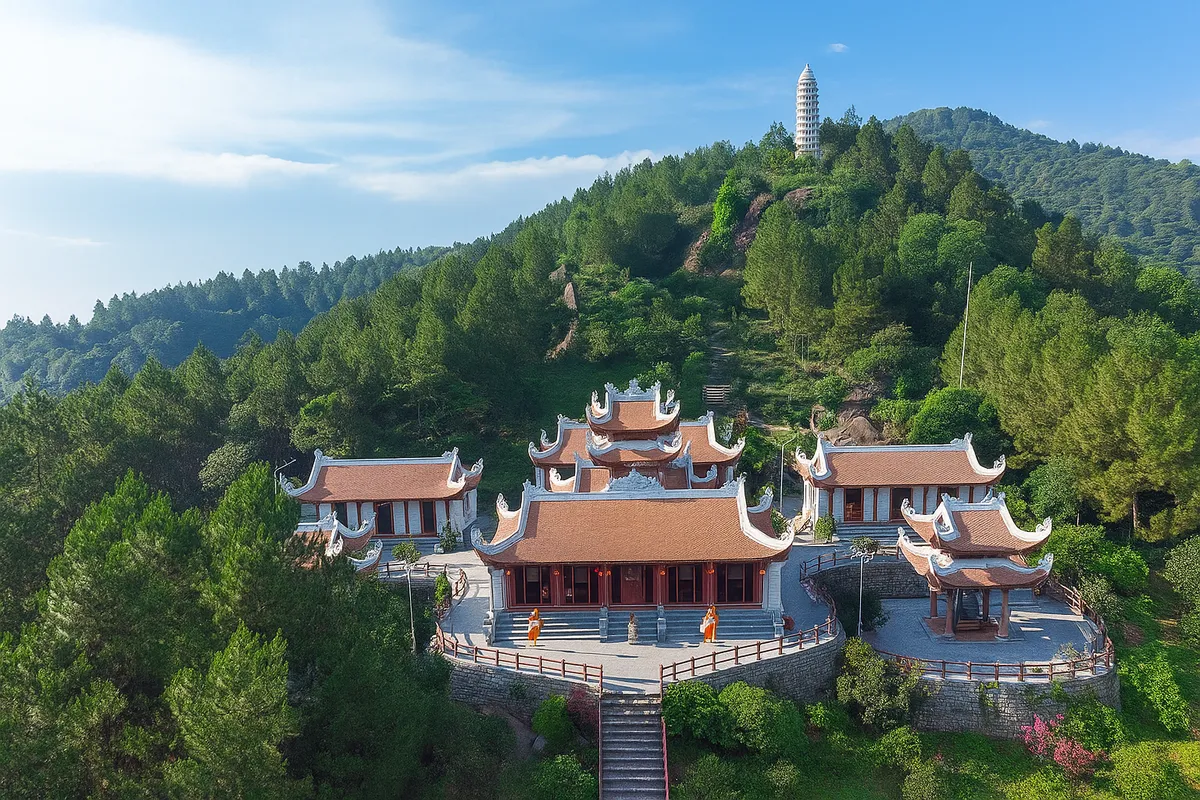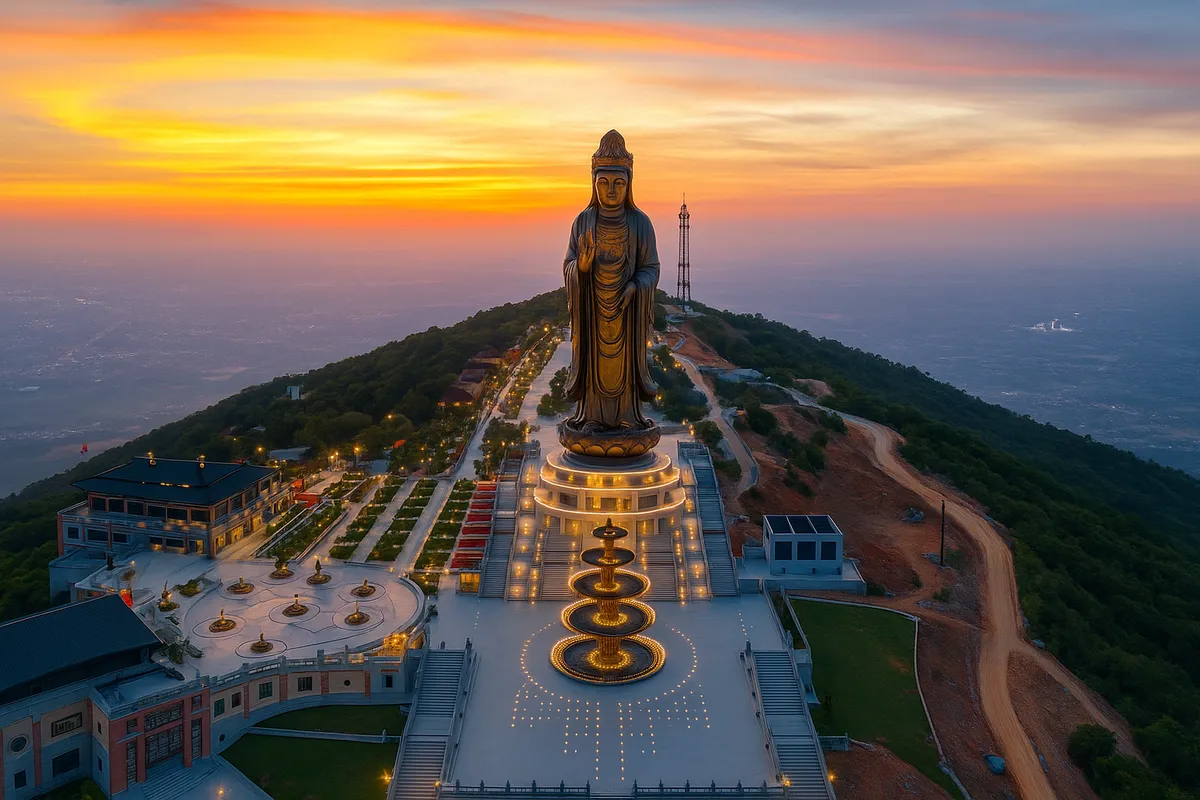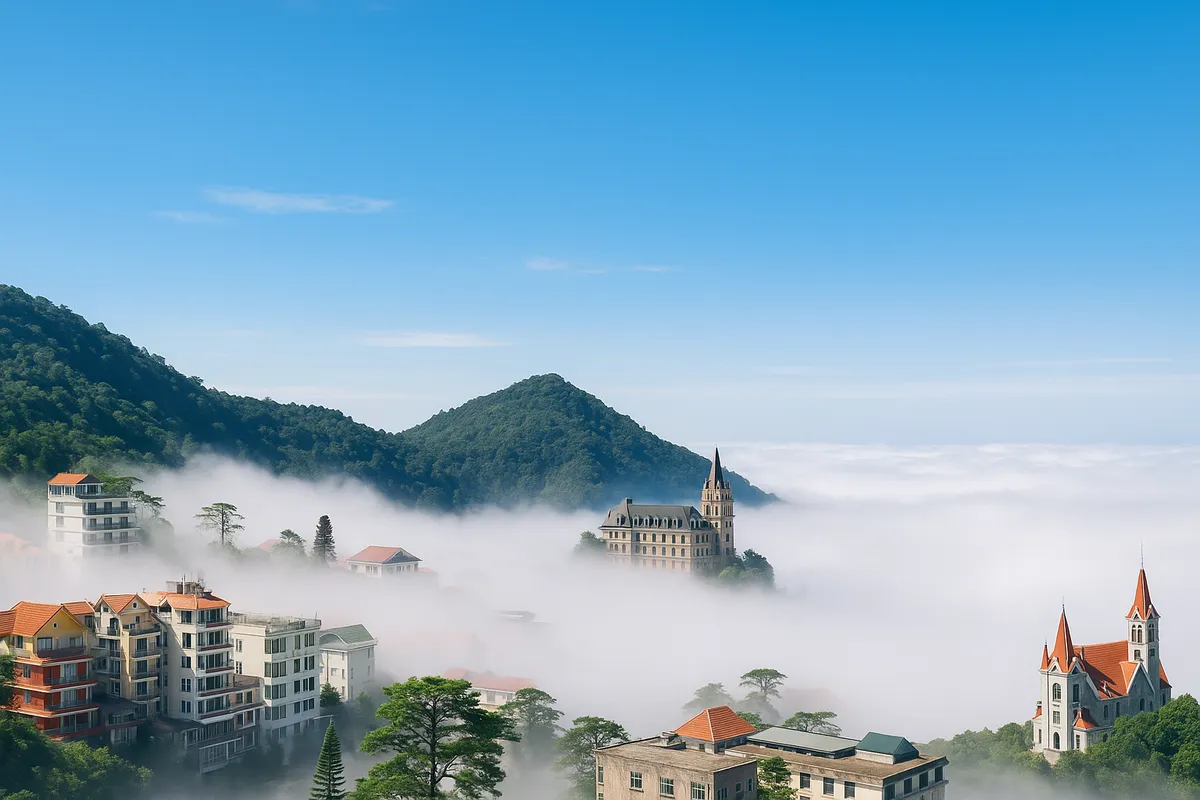Tran Quoc Pagoda hides something that surprises even Hanoians
- Saturday, Jun 14, 2025, 16:18 (GMT+7)
Tran Quoc Pagoda hides something that surprises even Hanoians
Tran Quoc Pagoda, regarded as the oldest pagoda in Vietnam, is not merely a spiritual destination. It opens a quiet path for those seeking a part of themselves in the constant flow of modern life.
Nestled peacefully on a small peninsula on the eastern edge of West Lake, Tran Quoc Pagoda rests like a hidden gem upon still waters. The land was once an island called Kim Ngu, tied to the image of a fish transforming into a dragon, a symbol rich with legend. According to ancient records, the pagoda was built during the Early Ly Dynasty in the sixth century, originally named Khai Quoc. It once stood beside the Red River and served as a sacred site of the former capital. After enduring geographical changes, erosion, and relocations, the pagoda was moved to its current spot beside West Lake. This shift did not weaken its spiritual presence. On the contrary, it turned the site into a living vessel of memory, where every stone and wooden beam carries the silent imprint of past dynasties.
Passing through the triple-arched gate is like stepping into another realm. On either side are rare Nom-script couplets, a distinctive cultural element not often seen in northern Vietnamese temples. These inscriptions are not mere decorations. They are subtle invitations and timeless messages urging visitors to leave behind the dust of life before entering this place of reflection. In the deep silence, the noise of the outside world fades. Only the breeze rustling through leaves, the echo of distant temple bells, and the gentle rhythm of the heart remain.
The pagoda is arranged in the traditional “Cong” layout, with three aligned structures: the Forecourt, Incense House, and Upper Shrine, forming a solemn, unified space. Those who understand ancient architecture will see that this layout serves more than ceremonial purposes. It reflects a deep philosophy of harmony, cosmic order, and spiritual alignment. The space is not vast, yet every corner breathes with quiet life. Moss on the tiles, footsteps on stone, and even the light between columns can pause one’s thoughts and invite introspection.
At the heart of the courtyard stands the Luc Do stupa, eleven stories tall. Each level features an arched niche holding a precious stone statue of Amitabha Buddha. The tower, hexagonal in shape and set upon a lotus base, symbolizes purity and enlightenment. When sunlight strikes its surface, the entire structure glimmers on the lake like a lotus blossom floating in the sky. It is more than an architectural highlight. It embodies the union of aesthetics and belief, of art and the sacred. Standing before it, one cannot help but feel humbled, as if drawn into a space where time ceases to exist.
Beside the stupa stands a large Bodhi tree casting a wide shadow. Grown from a cutting of the original tree under which the Buddha attained enlightenment, this tree was gifted by the President of India in 1959. Its drooping branches touch the stone courtyard, creating an indescribable sense of peace. Some visitors come just to sit beneath it, take a deep breath, and let their minds quiet. No chants are needed. No ceremonies required. Just sitting in silence becomes its own kind of practice.
In a small chamber behind the main sanctuary rests a reclining Buddha, a rare form in northern Vietnam. The figure lies on one side, one hand gently placed beneath the cheek, the face calm and serene as if asleep. The space is hushed, with soft light and faint incense smoke tracing an invisible border between reality and impermanence. Visitors often linger here. Some weep. Some smile. Others remain still for a long while, as if grasping a truth that needs no words.
Behind the sanctuary lies the ancestral house, where fourteen ancient stone steles are preserved. These carvings record the temple’s restorations and historic milestones through the ages. One of the most notable was inscribed in 1639 by Nguyen Xuan Chinh, a scholar of the highest rank. These inscriptions are not just historical documents. They are the voices of their time, the reflections of those entrusted with preserving the nation’s sacred spirit. To read them is to read the soul of an era, written in stone, impervious to the passage of time.
Tran Quoc Pagoda also served as a place of royal worship. During the Ly Dynasty, it was not only a pagoda but also a royal residence and a center of Buddhist practice in ancient Thang Long. Eminent monks such as Khuong Viet and Thao Duong once presided here, ushering in a golden age of Vietnamese Buddhism. These stories are not found in textbooks. Yet they live on in the statues’ gazes, in the rhythm of the architecture, and in the oral traditions passed down from generation to generation.
For today’s youth, Tran Quoc Pagoda is also a destination for capturing uniquely atmospheric photos. In the early morning, as mist floats above the lake, the pagoda reflects like a dream upon the water’s surface. In the late afternoon, golden sunlight bathes the tiled roof, catching on lotus leaves, wooden doors, and aged bricks. Every moment here is naturally beautiful, needing no editing or special effects. But what truly captivates visitors is not just the visual charm. It is the quiet, grounded, and sincere feeling that lingers, something not every place can offer.
Tran Quoc Pagoda does not promote itself. It is not loud, not extravagant. Yet everyone who leaves carries with them a quiet depth that is hard to explain. Perhaps it is the touch of something sacred brushing gently against the soul. Perhaps it is a question about life, about belief, about who we are. Or perhaps it is a soft sigh, realizing only now that Hanoi holds such a place. A place that, if left unseen, would be a great absence in the journey of living deeply and living beautifully.
In a city transforming every day, Tran Quoc Pagoda remains like a quiet guardian of memory, needing no noise, no display. It preserves not only history but a fragment of the soul of the capital. And perhaps, on one still afternoon, as you step through its gate and leave behind the noise, you will meet yourself again within its silence. No one needs to remind you. No one needs to guide you. In that singular, private moment, you will understand that some places need no explanation, because their very presence is a powerful lesson on life, on awareness, and on the profound beauty within the human spirit.

 CHECKIN.VN
CHECKIN.VN








Share on